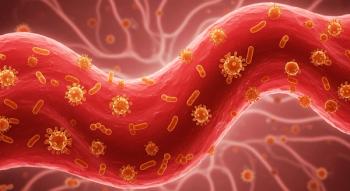
Emerging Evidence Shows Hesperidin's Benefits in Cardiometabolic Health
Key Takeaways
- Hesperidin significantly reduces triglycerides, total cholesterol, and LDL, especially with doses over 500 mg/d and durations longer than 6 weeks.
- It enhances lipid metabolism by facilitating VLDL catabolism, stimulating LPL activity, and increasing LDL receptor expression.
Hesperidin, a citrus-derived flavonoid, shows promise in improving cholesterol, blood pressure, and metabolic health, particularly at higher doses and longer durations.
Hesperidin, the major flavonoid found in the citrus family of fruits—mainly oranges and limes—is being recognized more and more for the benefits that it can bring to the cardiovascular system and metabolism. Various systematic reviews and meta-analyses supported by nutrition and clinical knowledge are gradually revealing its possible treatment roles.
A systematic review and a dose–response meta-analysis have detailed the impacts of hesperidin supplementation on the risk factors for cardiovascular diseases. The study concluded that hesperidin decreased triglycerides (TG), total cholesterol (TC), and low-density lipoprotein (LDL) to a significant extent; thus, these changes were more notable in subgroups as a result of intervention longer than 6 weeks, daily doses over 500 mg, obese participants (body mass index [BMI] > 30), those younger than 50 years, and those with raised baseline TG/TC levels.1
On the mechanistic level, hesperidin seems to facilitate very-low-density lipoprotein (VLDL) catabolism, stimulate lipoprotein lipase (LPL) activity, inhibit apolipoprotein B secretion, and increase LDL receptor expression, thereby improving lipid removal from the blood and lessening LDL secretion. Consequently, hesperidin’s intervention in dyslipidemia is further supported by these synergistically combined actions.1
The same meta-analysis found no significant pooled effect of hesperidin on fasting blood glucose (FBG) or homeostatic model assessment of insulin resistance (HOMA-IR) in general populations. However, subgroup analysis revealed that both FBG and insulin levels were significantly reduced with higher doses (> 500 mg/d) and longer durations (> 6 weeks for FBG, > 8 weeks for insulin), especially among individuals with baseline FBG of 100 mg/dL or greater, cardiovascular disease, or aged 50 years. These findings suggest that optimal dosing and duration are critical for glycemic benefits to manifest.1
A thorough analysis in Food & Function has been pointing out hesperidin as low-cost, original nutraceuticals that could be used widely in the areas of the cardiovascular system, metabolism, and inflammation. The overview highlights these compounds, antioxidative and anti-inflammatory features that, in part, point to the agent’s medicinal potential.2
Supportive nutrition-centered coverage in Verywell Health outlines real-world benefits linked to hesperidin. It emphasizes its cardiovascular advantages, such as improving cholesterol and blood pressure, its roles in stroke recovery, metabolic and liver health, and even cognitive and lung support. Notably, doses of 300 to 600 mg/d are commonly used, with up to 1 g daily shown to be well tolerated; however, formulation matters due to hesperidin’s limited bioavailability.3
For pharmacists, hesperidin represents an opportunity to integrate evidence-based nutraceutical counseling into patient care. Keeping in view its evidence-backed benefits in lipid modulation, blood pressure reduction, and glucose control possibilities at higher doses and longer durations, pharmacists are the health care professionals who can guide patients for proper use of supplements, especially those with cardiovascular risk factors or metabolic concerns. Aside from this, pharmacists should advise patients on bioavailability issues, insist on sourcing from third-party–verified manufacturers to guarantee the quality, and watch out for potential interactions with antihypertensives, statins, or antidiabetic medications.3
Hesperidin demonstrates growing evidence as a multifunctional nutraceutical with potential benefits in lipid management, glycemic control, blood pressure reduction, and liver and cerebral health. The most robust findings stem from higher-dose (> 500 mg/d), longer-duration (> 6–8 weeks) regimens, especially in at-risk populations. As hesperidin’s clinical promise continues to unfold, more large-scale, well-controlled trials will be pivotal in establishing its therapeutic utility and informing formulation and dosage standards.
REFERENCES
Khorasanian AS, Fateh ST, Gholami F, et al. The effects of hesperidin supplementation on cardiovascular risk factors in adults: a systematic review and dose-response meta-analysis. Front Nutr. 2023;10:1177708. Published 2023 Jul 12. doi:10.3389/fnut.2023.1177708
Najjar Khalilabad S, Mirzaei A, Askari VR, Mirzaei A, Khademi R, Baradaran Rahimi V. How hesperidin and Hesperetin, as promising food Supplements, combat cardiovascular Diseases: A systematic review from bench to bed. Journal of Functional Foods. 2024;120:106358. doi:10.1016/j.jff.2024.106358
Tran T. The Potential Benefits of Hesperidin. Verywell Health. Published March 26, 2023. https://www.verywellhealth.com/what-you-need-to-know-about-hesperidin-89462
Newsletter
Stay informed on drug updates, treatment guidelines, and pharmacy practice trends—subscribe to Pharmacy Times for weekly clinical insights.




















































































































































































































